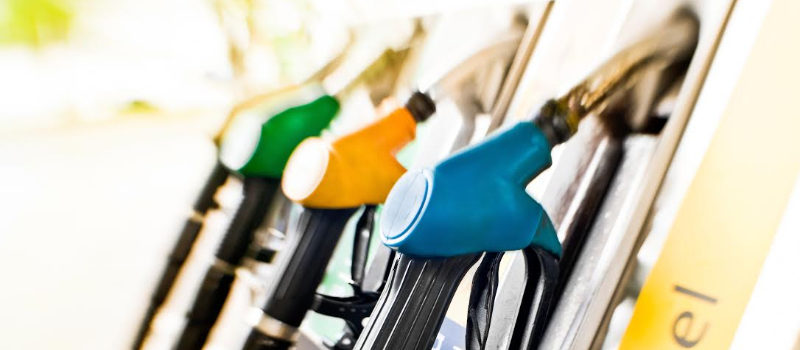Have you ever found yourself at the service station wondering “which fuel is best for my car?”. Premium 95 Octane unleaded? Premium 98 Octane unleaded? Standard unleaded 91? Or E10 petrol? So many numbers, so little explanation as to what they actually mean! And it doesn’t help that different branded service stations often have their own branded name for fuel types, increasing your petrol options (and confusion).
It’s time to get it all out in the open, so the next time you ask yourself “what fuel should I use?” you’ve got your answer ready.
Many people believe that because E10 petrol is the cheapest per litre, it’s the cheapest fuel to run; however, the contrary is often true. But let’s step back a bit. The best place to start is the fuel that is recommended by your vehicle’s manufacturer.
Your Unleaded Petrol Options
Standard Unleaded Petrol 91 or E10
Most standard cars in Australia will have the ‘Unleaded Fuel Only’ sticker on your fuel cap. This means you can use Standard Unleaded Petrol 91 or E10. It has a mix of up to 10% ethanol and it’s the cheapest by the litre at the pump. If you have an older vehicle, however, you should avoid using E10 as it can clog your fuel filter and injectors and become an expensive problem to solve.
Premium 95 Octane Unleaded Petrol
Premium 95 octane unleaded petrol is the cheaper of the two premium unleaded fuels available. It’s the one you use if your fuel cap says ‘PremiumUnleaded Only’. Using E10 petrol in these vehicles can cause serious engine damage and an expensive car repair bill. Ouch!
Premium 98 Octane Unleaded Petrol
Premium 98 octane unleaded petrol is the most expensive petrol on the market This premium fuel is required by many luxury and high-performance vehicles, as well as many cars with a turbo or supercharger. If your fuel cap says ‘98 Octane Unleaded Only’ then – you guessed it – this is the one you must use.
E85 (Biofuel)
E85 biofuel is a new standard of fuel coming into the market. More environmentally friendly (made from corn in most countries), it produces fewer emissions. Many newer fuel efficient cars are being released with E85 as manufacturers move towards more environmentally friendly fuel options. But don’t let the term ‘environmentally friendly’ put you off if you like performance. Group A Touring cars use E85 and it contains a 106 octane rating (better than the highest premium 98 fuel).
Beware the ‘cheaper’ price tag, though. Approximately 20% cheaper at the servo, E85 vehicles use a lot more fuel, so you’ll be filling up more often and your overall spending will be about the same as everyone else.
So, Which Fuel Is Best for My Car?
When choosing the best fuel for your car you must remember that you can always use a higher octane (that’s the higher number) fuel but never ever a lesser fuel. For example, using E10 on a Premium Unleaded vehicle is going to seriously damage your engine… and your hip pocket! Obviously, you can’t move down, so for everyone who has a choice, the big question is should you go premium?
Going Premium
If your car, like most Australian cars, doesn’t specify a particular fuel and instead reads ‘Unleaded Petrol Only’ then you get to choose if you want to go premium. Running E10 will certainly save you a few cents per litre at the pump; however, fuel efficiency may be lower, which could lead to more visits to the petrol station. The thing is it’s different for every car, in some cases premium unleaded may achieve better fuel efficiency and performance, while in others you may be wasting your money as you won’t notice the difference. The only way to know for sure is to test it.
The Test: What’s The Best Fuel For Your Car
Important: The below test is only for standard vehicles with the manufacturer specification is ‘Unleaded Petrol Only’.
- Fill your car with regular unleaded petrol and set your trip counter to zero.
- Drive around as you would normally.
- When you next need to fill up, fill up again with regular unleaded petrol. Record the kilometres on your trip counter, the number of litres required to fill your tank and the cents per litre charged.
- To work out your fuel costs on regular unleaded, divide the kilometres driven by the litres used and then multiply this number by the cost of petrol.
For example:
100kms driven ÷ 10 litres fuel used = 10 litres per 100km
10 litres x $1.25 per litres of regular unleaded = $12.50 per 100km
Now you have the kilometre-per-litre fuel rating for your vehicle using regular unleaded.
- Repeat this process using premium unleaded and compare the difference in dollars per 100km to see whether your car is more fuel efficient on regular or premium unleaded.
This is going to vary as fuel prices change, however, what you should be able to calculate is the point at which the cost difference between regular and premium makes no difference to your overall fuel cost. Knowing this will help you decide which petrol to choose the next time you fill up — if your objective is to save money on fuel, that is.
The Finish Line
- For unleaded cars, you can either use the recommended fuel or a higher-octane one than the manufacturer’s recommendation.
- Under no circumstances should you ever put a lower-octane fuel than what the manufacturer has recommended, as this could damage your engine.
- The best fuel for your car depends on your car and driving style – do the test and know for sure what’s best for you.
Having car troubles? Find your local mechanic to request a free quote for car servicing or car repairs.



